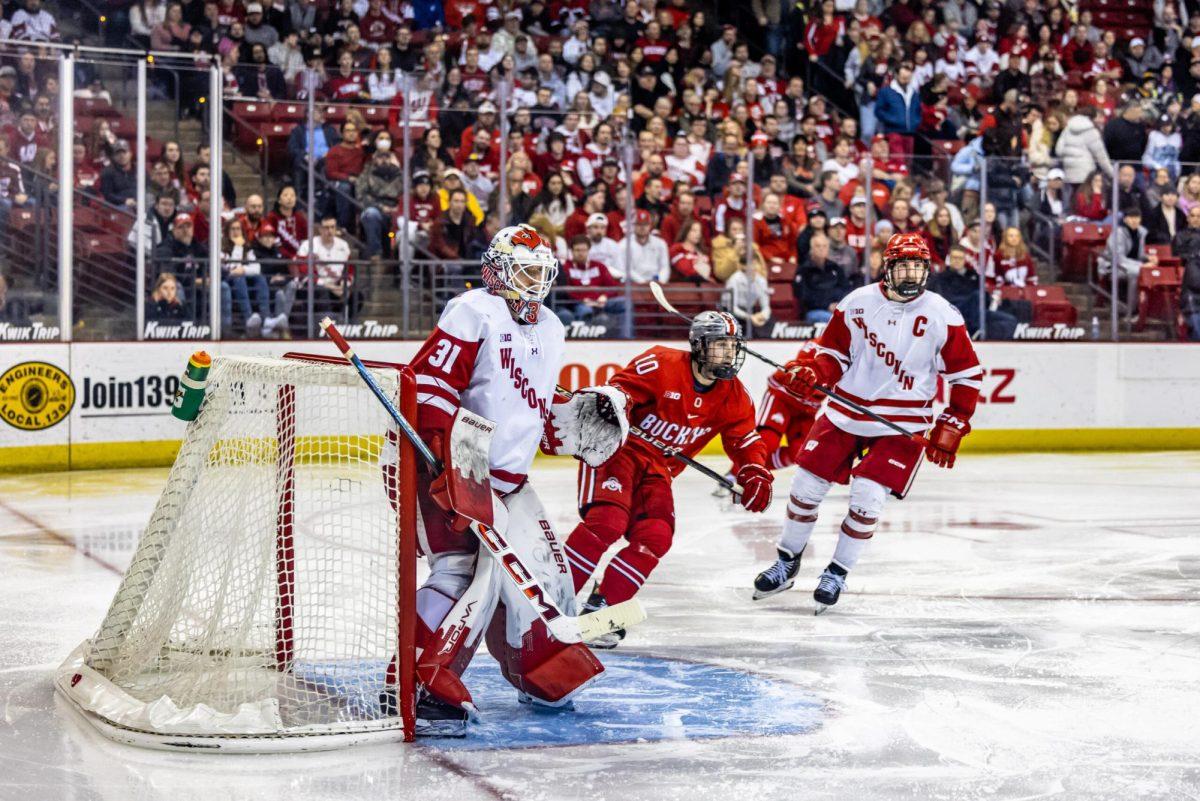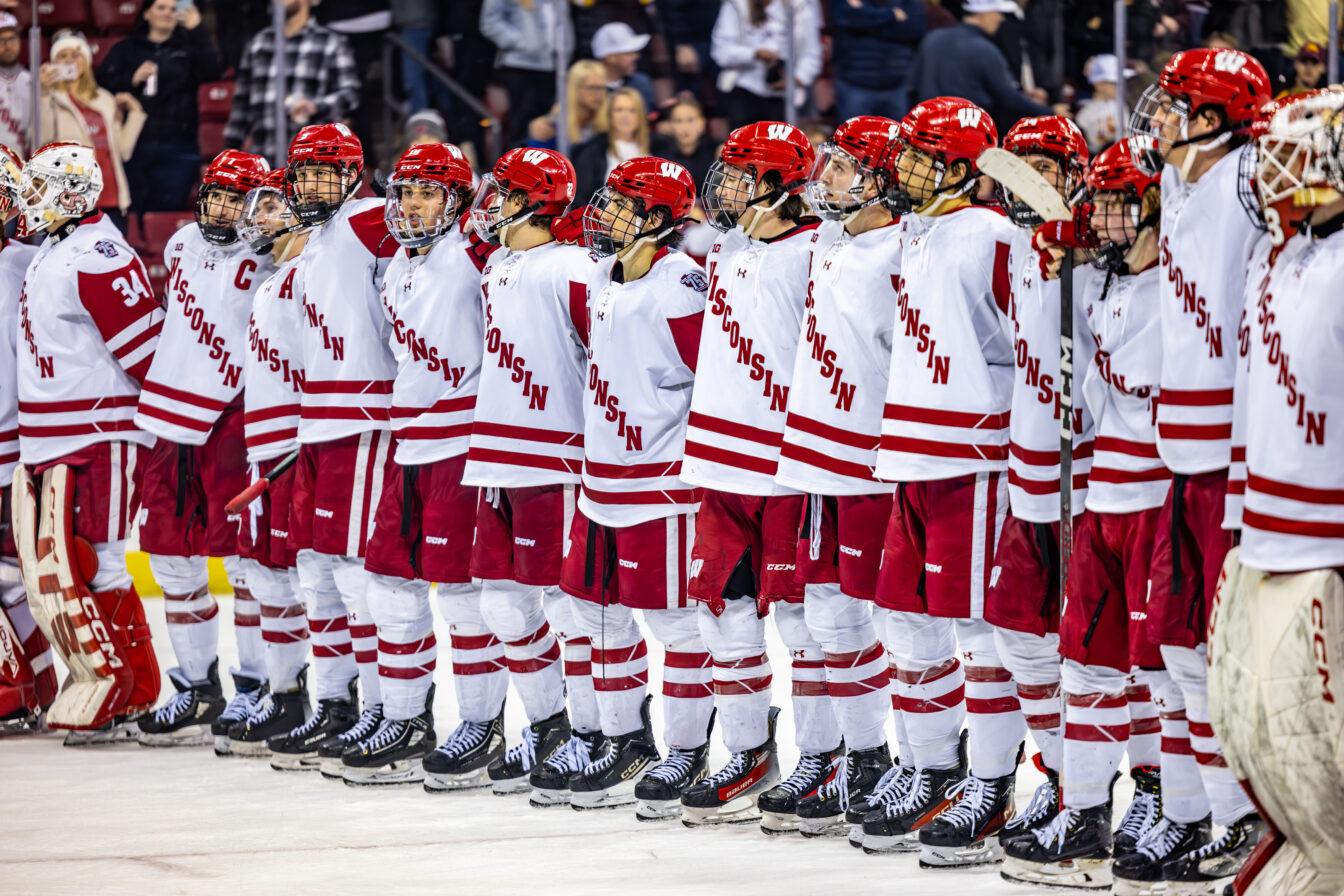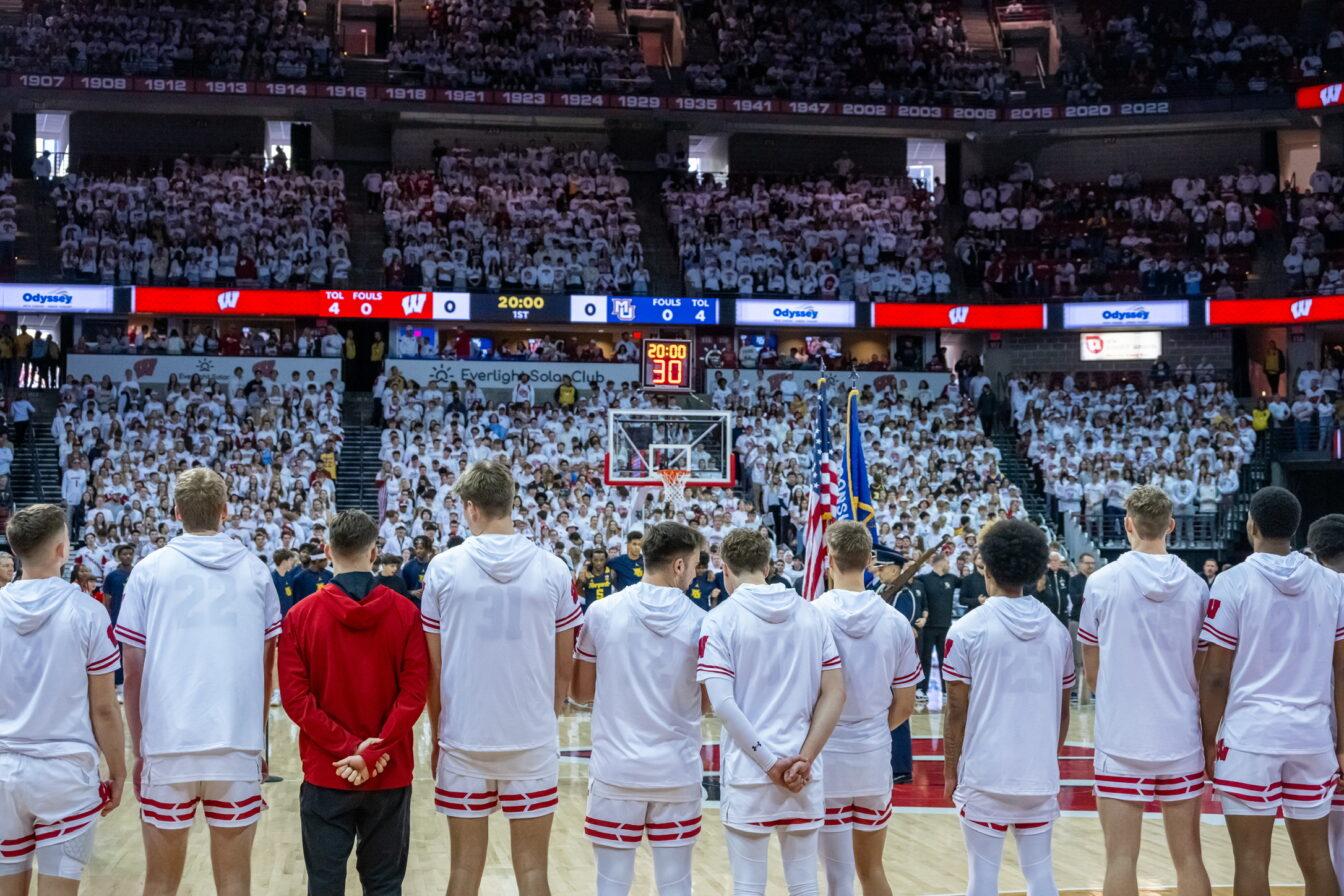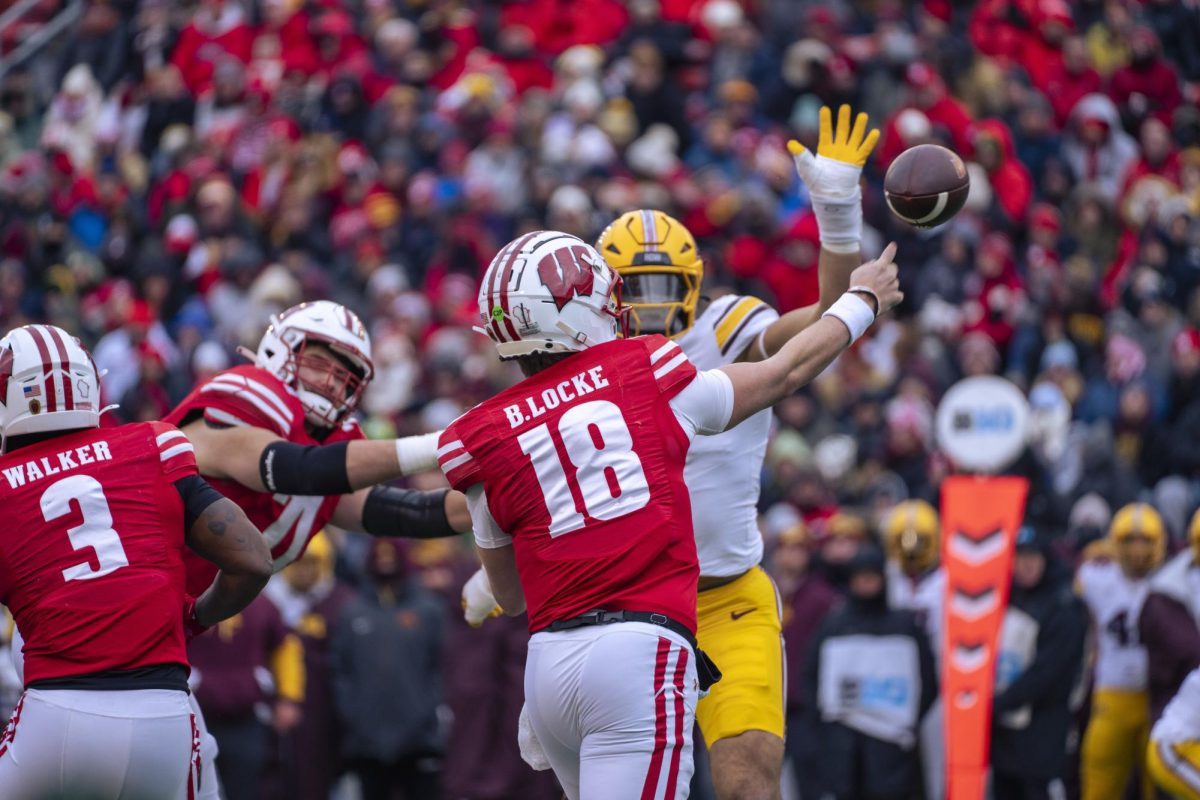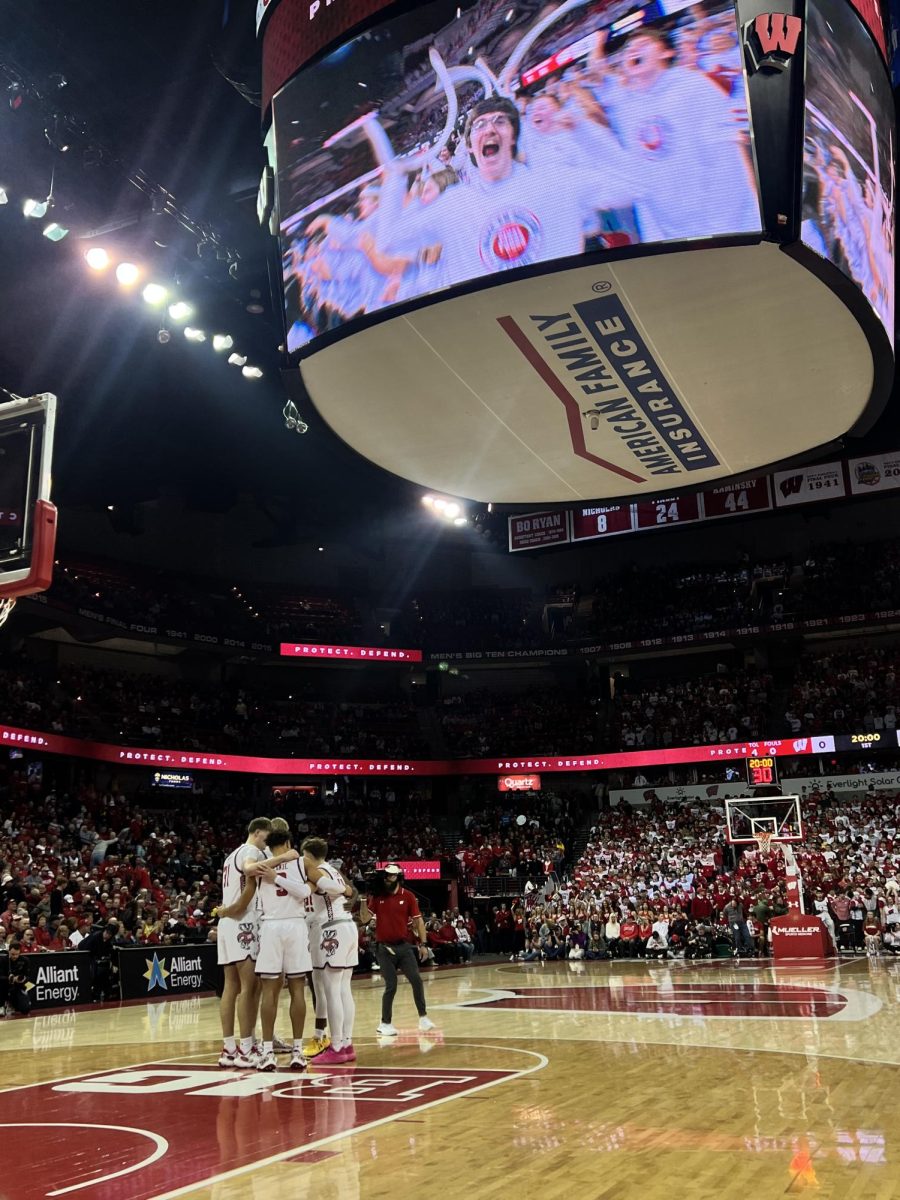
In the case of the Wisconsin men’s hockey team, the Badgers experienced a midseason high that surprised everyone – team included – before tumbling back into preseason expectations of being a .500 team.
Wisconsin’s season ended with a 2-1 loss to Colorado College at World Arena on March 13. The University of Wisconsin’s slim hopes for an NCAA tournament berth were extinguished with a questionable penalty on defenseman John Ramage, which gave CC the power play that resulted in the winning goal.
The series between two teams on the edge of the tournament field could have gone either way – Wisconsin won the first game 3-1 before giving away the second of the three-game series. Up 3-2 with less than four minutes left, UW goaltender Scott Gudmandson misplayed a puck that allowed CC’s Scott Winkler to wrap the puck around and tie the game at 3.
Colorado College would win on a power play goal in overtime.
Had the Badgers won the series and gotten at least one win in the Final Five, they may have risen high enough in the PairWise rankings (which simulate the NCAA selection process) to merit the NCAA bid the Tigers earned. Instead, the 2010 national runners-up will watch the Frozen Four from Madison.
The indications of Wisconsin’s youth were fully on display in Colorado Springs. Going into Game 2’s eventual loss, UW was on a 48-0-4 streak when leading after two periods. The Badgers then lost their next two games, while holding leads going into the third.
Wisconsin also had never lost a first-round playoff series when winning the first game since the best-of-three format was adopted, according to the Wisconsin State Journal.
So much for those streaks.
UW finished the season with a 21-16-4 record, but ended on a 2-8-1 stretch, which included a winless month of February. Heading into a bye-week in the first week of February, the Badgers had 19 wins – tied with North Dakota for most in the nation. Wisconsin proceeded to get swept at Nebraska-Omaha, earned just one point at home against Minnesota and in what the team called its lowest point, was swept by a St. Cloud State team that finished the season under the .500 mark.
What made the late-season collapse so unnerving was how well the Badgers appeared to be playing prior to that. Entering the series with UNO, UW had won 12 of its last 13 games, had statistically the nation’s best goaltender and had a power play ranking among the tops in the nation.
At the time, Gudmandson owned a 1.78 goals-against average and a .937 save percentage. He finished the season with a 2.22 GAA and .921 save percentage after admittedly playing poorly in February.
Earlier in the season, the Badgers could seemingly not score unless they were on the power play, at one point scoring around 40 percent of their goals on the man-advantage. Entering 2011, Wisconsin was 31-112 (27.7 percent) on the power play. Current national leader Union is converting 31 percent of the time.
But in 19 games after the calendar turned, UW went just 13-92 (14.1 percent), while allowing opponents to go 22-91 on the man-advantage (24.2 percent). That disparity made itself more evident in UW’s season-ending playoff series, where the Badgers were unable to convert on key power plays while the Tigers got both winning goals on the man advantage.
Ultimately, the season can be looked at one of two ways: as a disappointing tease, or an indication that the future looks bright.
While the team looked like a lock for the NCAA tournament at the end of January with a manageable stretch of play to close the regular season, the Badgers were simply not deep enough to play with the better teams of the WCHA. Against WCHA teams with losing records, UW went 9-3-0. Against teams with winning records, Wisconsin went a miserable 3-10-3, including season sweeps by North Dakota and Nebraska-Omaha.
However, the guys the Badgers were counting on to have big years – defensemen Jake Gardiner and Justin Schultz, as well as forwards Jordy Murray and Craig Smith – produced, and did so in a big way.
Schultz was named WCHA Defensive Player of the Year as well as a top-10 Hobey Baker Award finalist. He led all defensemen in the nation with 18 goals and 29 assists for 47 points. His 18 goals were one off the school record for goals by a blueliner, held by Sean Hill, and also the most by a defenseman in the nation since the 2002 season. Schultz’s inclusion as a top-10 finalist for the Hobey marks the third consecutive year UW has had a defenseman on the list (Jamie McBain, 2009, Brendan Smith, 2010).
Schultz’s defensive partner Gardiner ranked third in the nation in blueline scoring, with a 10-31-41 line. Gardiner and Schultz were the top-scoring defensive pair in the nation, and also played a majority of minutes for the Badgers.
Smith took a step forward from his solid rookie campaign, going 19-24-43 to finish second on the team in scoring. He centered Murray and freshman Mark Zengerle, who took opposite approaches to scoring. Murray finished with 18 goals against 8 assists, while Zengerle had five goals and 31 assists.
The problem was, outside of UW’s “big five,” that the Badgers didn’t get enough production. Gardiner, Murray, Schultz, Smith and Zengerle accounted for 54.3 percent of the team’s goals and 54.1 percent of its total points. Senior Podge Turnbull was the only other Badger to score double-digit goals (13).
But unlike last season’s mass exodus of seven seniors and four underclassmen, the only Badger expected to leave early – Gardiner – has already done so. Schultz and Smith both told the Wisconsin State Journal’s Andy Baggot they were staying another season. And from a production standpoint, UW’s departing seniors accounted for a modest 29-32-61.
Freshmen Michael Mersch and Tyler Barnes looked at times like impact players, which should bode well for next season if they continue to progress. Fellow rookies Frankie Simonelli and Joe Faust should calm down at the blueline and provide UW with another solid defensive pair. Two of UW’s incoming freshmen for next season, Joe LaBate and Patrick Daly, were finalists for Minnesota’s Mr. Hockey award, and may be counted on to contribute immediately.
Ultimately, this team was what it looked like in October: a group with talent, but too much youth and not enough depth to make a sustained run to the NCAA tournament. A 21-16-4 record would have sounded about right at the outset of the season, but a 12-1 streak brought high hopes, while the 2-8-1 stretch that followed crushed them.
So despite a midseason surge that indicated otherwise, the 2010-2011 season was a rebuilding year, as expected. But Wisconsin has a young core that should be expected to take a big step next season.



